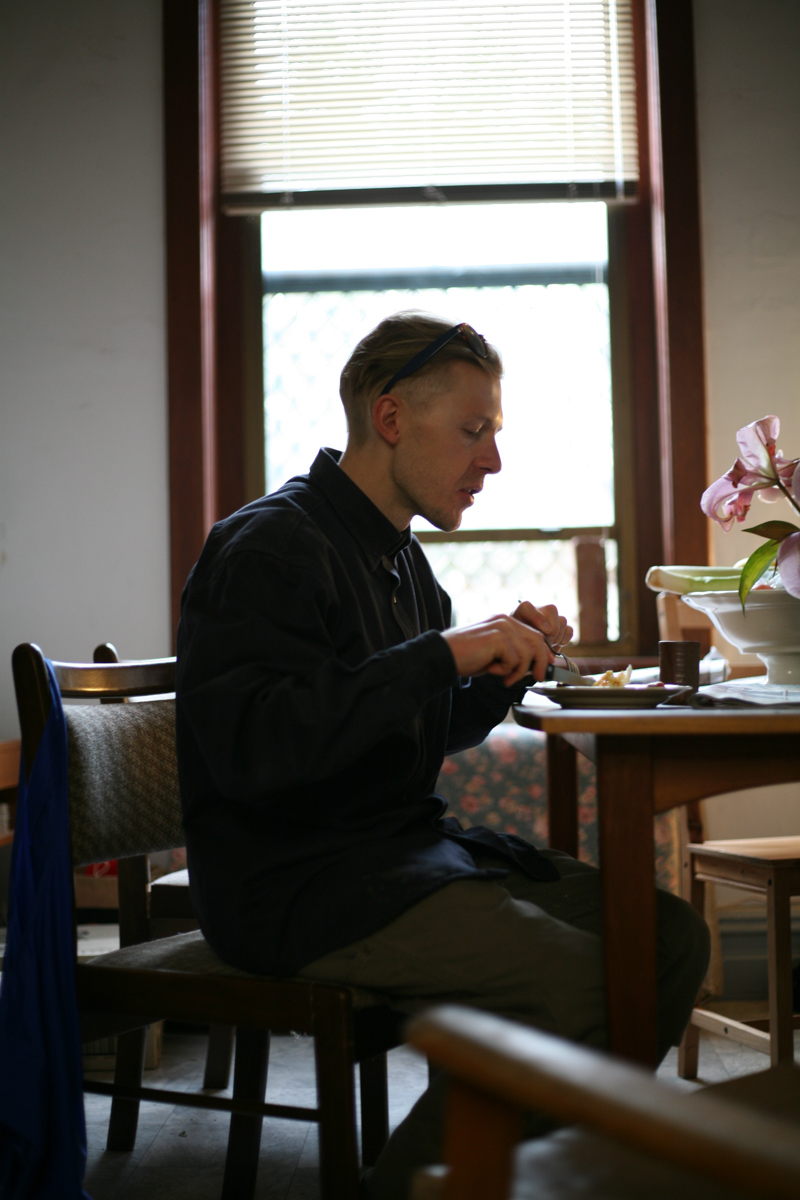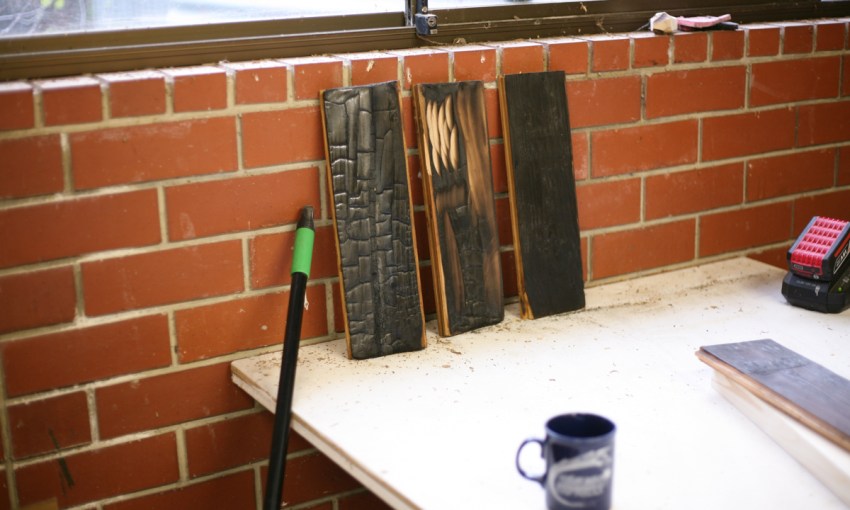There's a new hotel in the works for Hindley Street, but it might be a little smaller (and arty-er) than you imagine.
Timothy Tuppence and the Format Hotel
When we arrive at Tim’s home and workshop – a share-house in Torrensville, just north-east of Adelaide – it’s 4:30pm and he’s frying an egg. We presume that this is just a late lunch, but as he tells us more about his cabin project, it becomes clear that Tim isn’t keeping a regular schedule.
You can follow the cabin’s progress via Instagram, and find the Pozible campaign here. The exhibition opens at Format Systems [80 Hindley Street] on October 6.
“With this project, I’ve found myself waking up at 4am, without fail. There were a good couple of weeks where I was going on dawn walks, or reading the paper, or sitting up with a cup of tea sketching, because I couldn’t just lay there. I had to get up and do something,” says Tim.
“I haven’t been like this since my uni days. Most of uni I got by on 4 hours sleep.”
Tim completed degrees in visual communication and industrial design (plus a Graduate Diploma of Visual Art and Design) at UniSA, before travelling to the Netherlands to do a masters in Contextual design at Design Academy Eindhoven in 2014. Currently he works on the team of furniture designer Khai Liew, and teaches part-time at UniSA.
Tim rarely refers to himself as an artist (he simply says: “I’m a designer, that’s what I do”), but the project has all the characteristics of a work of art. To be displayed in the Format Systems’ gallery, the tiny cabin Tim is building is high on aesthetics but also has the practical functions of housing a bed, a table and wifi – things that will facilitate overnight micro-residencies for other artists.
Stan Mahoney, the director of Format Systems, says the multifaceted project has a lot of value when considered through a gallerist’s lens.
“Format’s upstairs gallery is a space with a lot of history,” Stan says. “The Collective renovated it specifically for this kind of experimental art – Tuppence has been around from the beginning, so he already understands the ethos of the place.
“The project and the rationale behind it couldn’t be more perfect: brash, foolhardy, romantic, strange, participatory. I’m really looking forward to this one.”

Format Gallery / Cabin render. Images supplied.
Building a cabin has been on Tim’s mind for a while. On his travels in Europe, he met avant-garde Russian architect Alexander Brodsky during a recycled-material cabin building workshop at Domaine de Boisbuchet. He’s done a bit of research into places around the world where you can build small structures without council involvement – where you can be as off-the-grid as you’d like.
Tim explains that his interest in small structures goes beyond the design-and-construct – it’s about different ways of living and creating. The ideas behind this project solidified after a conversation with Eleanor Amor, the gallery director at Format.
“I remember Eleanor asking me if I wanted to do a show. And my first response was: ‘Can I build a cabin?’, without even thinking. She said yes, and then we went from there,” Tim says.
The cabin has been designed to be built in modules, which will be carried up the stairs to the gallery space and re-assembed. It will then be clad in timber that has had a Shou-sugi-ban preserving treatment – a traditional Japanese process of burning, washing and sealing. Although waterproofing isn’t a necessary feature for a cabin to be housed indoors, the technique is being employed for its aesthetic qualities, and allows for more research and collaboration.

Tim shows us how he will be raising the roof… literally.
After realising that he was outside of any grant funding, Tim decided to use the crowd-funding platform Pozible to define the project, attract collaborators, and secure funds. Supporters can call shotgun on pieces of furniture, tableware, pendants, a publication or a piece of the cabin’s Shou-sugi-ban cladding.
At the time of writing, the most popular reward is a mini-artist residency, which includes an overnight stay in the cabin.
“Why not have people live in it for a day? It was a no brainer,” Tim says with a grin.
Cabin guests have the opportunity to make something during their stay that may be featured in the project publication, or as part of another event.
“After being overseas… It’s good that you can go away, come back, and you’ve still got connections,” says Tim.
“Adelaide’s a very good place for getting something off the ground, or trying new things. I was talking to Jason Ankles about it recently… The support network, your friends, your mates are there and they say yes. Certainly I could never do it on my own, not in this timeframe. I’ve only had a couple of months.”
Construction time is nearly over, and we’ll all be able to see the cabin in the flesh on October 6. Perhaps Tim will have to book a residency place to finally get a good night’s sleep.










